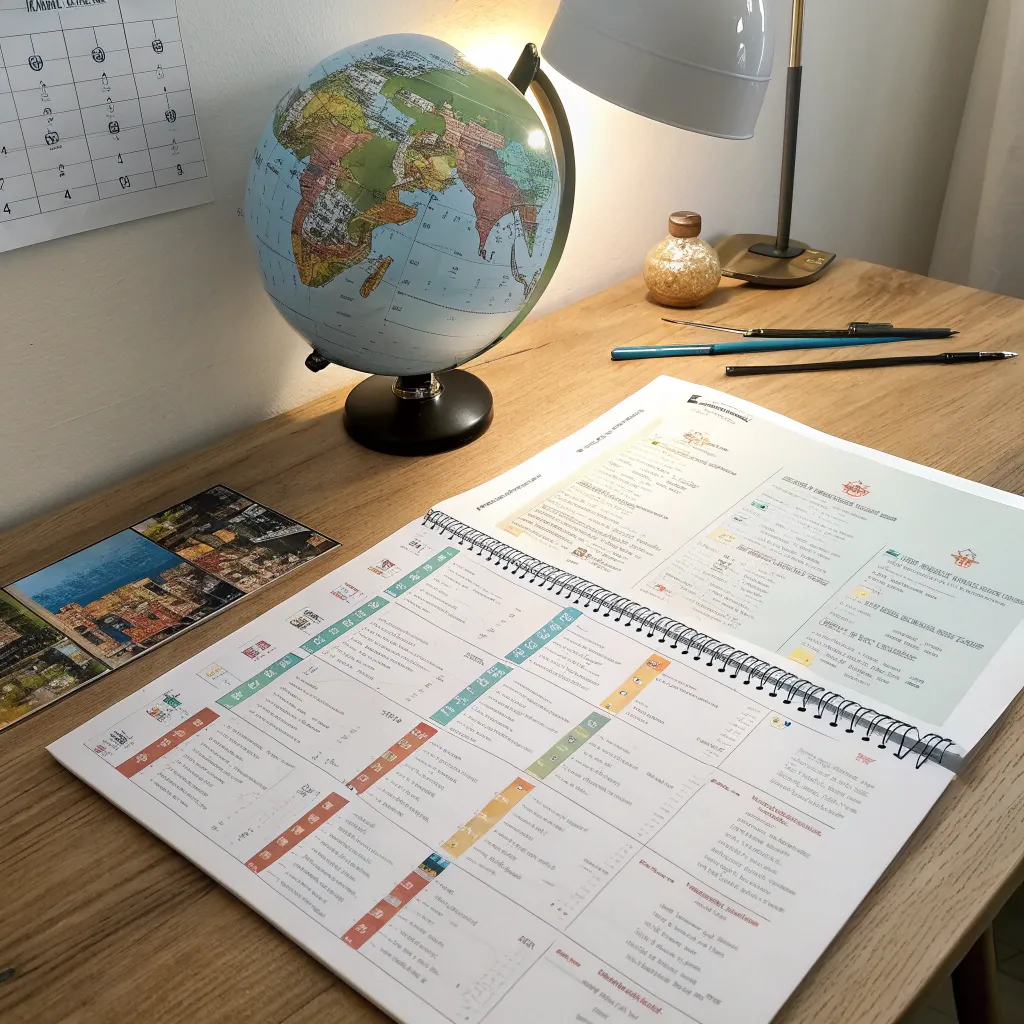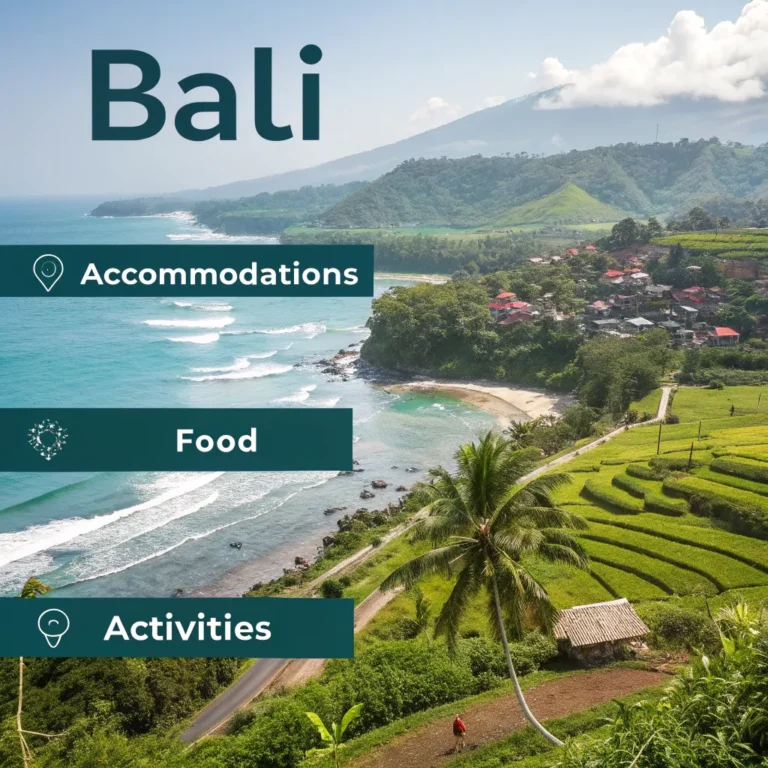Itinerary Explained: Everything You Need to Know
Planning a trip can be hard. But with a good itinerary, you can stay on track and enjoy your trip more.
An itinerary is more than just places to go. It’s a detailed plan for your trip. It helps you find your way in new places.
Whether you travel a lot or it’s your first time, knowing about travel planning is key. It makes your trip stress-free and fun.
Key Takeaways
- An itinerary helps travelers stay organized and focused.
- Effective travel planning is key to a stress-free journey.
- A well-planned itinerary can enhance the overall travel experience.
- Travelers can make the most of their trip with a detailed plan.
- A good itinerary helps navigate unfamiliar destinations.
What Is Itinerary?
A travel itinerary is more than just a schedule. It’s a roadmap for your journey. It helps you navigate through unfamiliar territories efficiently.
The Basic Definition and Concept
An itinerary is a detailed plan for a trip. It outlines the traveler’s journey, including transportation, accommodations, and activities. It’s a personalized guide that ensures travelers make the most of their time at their destination.
Historical Context of Travel Planning
Historically, travel planning involved paper maps and guidebooks. The advent of digital technology has changed this. Now, it’s easier to create, share, and modify itineraries. Digital tools are key in modern travel planning.
Why Itineraries Are Essential for Modern Travelers
In today’s fast-paced world, a well-structured travel itinerary is crucial. It helps manage time effectively. This ensures travelers experience the best of their destination without stress.
An itinerary also aids in budgeting. It helps make necessary reservations in advance.
By understanding the concept and importance of an itinerary, travelers can enhance their travel experiences. This makes their trips more enjoyable and stress-free.
The Evolution of Travel Itineraries
Planning trips has changed a lot with digital tools. Now, planning travel is easier and more personal than ever.
From Paper Maps to Digital Planning
We don’t use paper maps and guidebooks anymore. Today, we have lots of info online, like destination guides and travel updates.
Digital itinerary planning makes organizing trips simple. You can book flights and hotels and make reservations with just a phone or computer.
How Technology Has Transformed Itinerary Creation
Technology has changed travel planning a lot. It gives us tools for quick changes and personal touches. Now, travelers can:
- Find detailed info about places online
- Book travel easily
- Get updates on flights and weather
The Rise of Personalized Travel Experiences
Digital tools help make personalized itineraries for everyone. This makes traveling more fun and less stressful.
| Aspect | Traditional Planning | Digital Planning |
|---|---|---|
| Information Access | Guidebooks, Maps | Online Guides, Apps |
| Booking Travel | Travel Agencies | Online Booking Platforms |
| Personalization | Limited | Highly Personalized |
As tech keeps getting better, so will travel planning. This makes vacation planning exciting and always changing.
Key Components of a Comprehensive Itinerary
Planning a trip is more than booking flights. It’s about making a detailed plan. This plan should cover all parts of your trip. It helps you use your time and money well.
Transportation Details
Transportation is a key part of your trip plan. It includes:
Flights, Trains, and Local Transit
Book flights and trains early to get good prices. Look into local transport like buses and bikes too. This helps you get around easily.
Rental Cars and Navigation
If you’re renting a car, note the agency, car type, and where to pick it up. A GPS or app on your phone is also handy.
Accommodation Information
Your plan should list where you’ll stay. Include hotel details, check-in times, and how to contact them. Choose places that are easy to get to and well-reviewed.
Activities and Sightseeing
Plan your sightseeing early to avoid stress. Look up top spots, tours, and local events. This makes your trip smoother.
Meal Planning and Reservations
Plan your meals too. Find out about local food spots and book at busy places. This saves time and gets you a seat.
Emergency Contacts and Important Documents
Don’t forget to include emergency info and important papers. Keep digital copies of your passport and ID. This is useful in emergencies.
With these parts in your plan, you’ll have a detailed trip schedule. It will make your trip better and more enjoyable.
Different Types of Itineraries
Itineraries come in many forms, depending on why you’re traveling. Whether for fun, work, or adventure, knowing the types helps you plan better.
Leisure Travel Itineraries
Leisure trips are all about having fun and relaxing. You might see sights, try new foods, and visit cultural spots. For example, a trip to Hawaii could include surfing lessons, volcano visits, and beach luaus.
Business Trip Itineraries
Business trips aim to be productive and efficient. They include meetings, conferences, and networking. A good business trip also lets you explore and relax a bit.
Group Travel Itineraries
Group trips are for many people together. They need planning and flexibility. These trips are great for family, school, or work groups. They make sure everyone has something fun to do.
Adventure Travel Itineraries
Adventure trips are for those who love excitement. You might go hiking, rock climbing, or scuba diving. These trips are safe but full of adventure.
Cultural and Educational Itineraries
Cultural trips focus on learning and experiencing new things. You might see historical sites, museums, and festivals. For instance, a trip to Italy could include tours of Roman ruins, art galleries, and cooking classes.
| Itinerary Type | Primary Focus | Common Activities |
|---|---|---|
| Leisure | Relaxation and enjoyment | Sightseeing, dining, cultural visits |
| Business | Efficiency and productivity | Meetings, conferences, networking |
| Group | Coordination and compromise | Varied, depending on group interests |
| Adventure | Excitement and challenge | Hiking, rock climbing, scuba diving |
| Cultural/Educational | Learning and cultural immersion | Historical site visits, museum tours, cultural festivals |
Travel expert
“The key to a successful trip is understanding your travel goals and choosing the right type of itinerary to match.”
Knowing the different itineraries helps you plan your trip better. It makes sure you get what you want from your journey.
How to Create an Effective Travel Itinerary
Creating a good travel plan is key for a fun trip. A good plan helps you use your time well. It makes sure you see important things and leaves room for surprises.
Research Phase: Gathering Information
The first step is to do lots of research. Learn about your destination’s culture, weather, and sights.
Destination Research
Knowing your destination is important. Learn about local customs, language, and top sights. This makes your trip meaningful.
Seasonal Considerations
Think about when you’re going. Weather, holidays, and events can change your plans.
Planning and Organization
After researching, start planning your trip.
Timeline Development
Make a timeline with travel dates, where you’ll stay, and what you’ll do. This helps you see your trip and make changes.
Budget Allocation
Decide how much money you have and how to spend it. Plan for travel, where you’ll stay, and activities.
| Budget Category | Allocated Amount | Percentage of Total Budget |
|---|---|---|
| Transportation | $500 | 25% |
| Accommodation | $800 | 40% |
| Activities | $400 | 20% |
| Food and Miscellaneous | $300 | 15% |
Finalizing Your Schedule
Now, finalize your plan. Make sure it’s doable and includes breaks.
Creating Backup Plans
Things don’t always go as planned. Have backup plans for important parts of your trip.
Digital Tools and Apps for Itinerary Planning
Travelers today have many digital tools and apps to help plan trips. These tools make planning easier and keep you updated in real-time. They also work well with other travel services.
Popular Itinerary Planning Applications
Many apps are popular for planning trips. They are easy to use and have lots of features. Here are some top picks:
- TripIt: It organizes your travel plans into one easy-to-read itinerary.
- Google Trips: It helps plan your trip from start to finish, including booking and activities.
- TripCase: It makes managing your travel plans simple and effective.
Cloud-Based Travel Organizers
Cloud-based services let you access your itineraries anytime, anywhere. They offer features like:
- Real-time flight updates
- Managing hotel reservations
- Booking activities
TripIt Pro and Kayak are examples. They have extra features for those who travel a lot.
Offline Solutions for Remote Destinations
For trips to places with no internet, offline apps are a must. They let you see your plans and maps even without internet.
Integration with Calendar and Mapping Services
Many tools work with your calendar and maps. This makes it easy to keep up with your travel plans. For example, linking with Google Calendar keeps your plans in sync with your schedule.
Using these digital tools and apps makes traveling easier and less stressful.
Balancing Structure and Flexibility in Your Itinerary
To have a great trip, mix a plan with room for change. A good travel itinerary sets the stage. But, being flexible lets you seize new chances or adjust plans.
The Importance of Buffer Time
Adding buffer time to your vacation planning is key. It helps when plans change or get delayed. This way, you won’t feel rushed or stressed.
Adapting to Unexpected Changes
Even with a solid travel itinerary, surprises can happen. Being ready to change plans makes your trip better. It keeps you from getting stressed by the unexpected.
Prioritizing Must-See vs. Nice-to-See Attractions
When planning, know the difference between must-sees and nice-to-sees. This makes your schedule realistic. It fits your interests without taking too much time.
Building in Downtime and Rest
Make sure to include downtime in your vacation planning. Rest is important to avoid burnout. It lets you enjoy your trip more.
By mixing structure and flexibility, you make a travel itinerary that’s fun and easy. This way, your trip is organized but open to new experiences.
Sample Itineraries for Popular Destinations
Sample itineraries for popular spots are great for planning your trip. Whether it’s a weekend city trip, a beach vacation, or an international journey, a good plan makes a big difference.
Weekend City Break Itinerary Template
A weekend city trip is perfect for seeing a new city. Here’s how to plan it:
New York City Example
- Day 1: See Midtown, the Empire State Building, and a Broadway show.
- Day 2: Visit the Statue of Liberty, walk in Central Park, and see the Metropolitan Museum of Art.
San Francisco Example
- Day 1: Check out Fisherman’s Wharf, take a cable car, and visit Alcatraz Island.
- Day 2: Go to Golden Gate Park, explore Chinatown, and see Twin Peaks.
One-Week Beach Vacation Itinerary
A week at the beach is a great escape. Here’s a sample plan:
- Day 1-2: Relax on the beach and see the local town.
- Day 3: Go snorkeling or diving to see underwater life.
- Day 4: Try water sports or go on a boat tour.
- Day 5-7: Keep relaxing and try local food.
Two-Week International Trip Itinerary
For a longer trip, try this two-week plan:
| Day | Location | Activity |
|---|---|---|
| 1-3 | Paris | See the Eiffel Tower, Louvre, and Montmartre. |
| 4-6 | Amsterdam | Visit the Rijksmuseum, take a canal cruise, and explore Jordaan. |
| 7-14 | Barcelona | See Gaudí’s Sagrada Família, stroll La Rambla, and enjoy Barceloneta beach. |
Road Trip Itinerary Structure
For a road trip, follow this structure:
- Day 1-2: Drive from City A to City B, stopping at cool spots.
- Day 3-4: Explore City B and its area.
- Day 5: Drive to City C, stopping at interesting places.
Good travel planning mixes driving with seeing new things. Don’t forget extra time for surprises or changes.
Common Itinerary Mistakes and How to Avoid Them
A good plan is key for a great trip. But, many mistakes can mess up your plans. Knowing these can help you have a better trip.
Overpacking the Schedule
Too many plans for one day is a big mistake. It can make you tired and stressed. Make sure to leave some free time for surprises or just to chill.
Underestimating Transit Times
Thinking travel times are shorter than they are is common. Check out your travel options and add extra time for delays. This way, you won’t feel rushed.
Neglecting Local Customs and Holidays
Ignoring local ways and holidays can cause problems. For example, visiting during a holiday might find places closed. Learn about your destination to avoid these issues.
| Common Mistake | Consequence | Solution |
|---|---|---|
| Overpacking the Schedule | Exhaustion and Stress | Leave Buffer Time |
| Underestimating Transit Times | Missing Connections | Research Transportation Options |
| Neglecting Local Customs and Holidays | Closed Attractions or Increased Prices | Research Local Customs and Holidays |
Failing to Account for Jet Lag
Jet lag can really affect your trip, more so on long flights. Plan your trip to include rest days. Try to adjust your sleep before flying to feel better.
Not Having Digital and Physical Backups
Not having copies of your plans and important papers can cause big problems. Keep physical copies of your plans and papers. Also, save digital copies safely online.
Knowing these common mistakes and how to avoid them can make your trip better. Whether it’s a relaxing vacation or an exciting adventure, a good plan is essential.
Sharing and Collaborating on Itineraries
Sharing and working together on itineraries is key for group travel. It makes sure everyone knows what’s happening. Digital tools have made planning trips with many people easier.
Tools for Group Itinerary Planning
Many apps and sites help plan group trips. TripIt and Google Trips let you make a shared plan. This keeps everyone up to date.
These tools offer updates in real time and help plan together. They also work with other travel services like booking and maps.
Keeping Everyone Informed and Updated
Keeping all group members informed is a big challenge. Using one place for sharing itineraries helps a lot.
“The best way to ensure a smooth trip is to keep everyone informed. With the right tools, you can avoid misunderstandings and make the most of your travel time.”
Managing Different Preferences and Needs
Group travel means meeting everyone’s needs and wants. It’s important to think about what each person wants.
- Find places everyone wants to see.
- Make sure there’s time for fun and rest.
- Think about food and places to visit that are easy to get to.
Assigning Responsibilities in Group Travel
Assigning tasks makes group travel better. You can have people handle things like planning or booking.
This way, everyone helps out. It makes the trip more fun for everyone.
Adapting Your Itinerary for Different Travel Styles
Changing your travel plan to fit different styles can make your trip better. Planning your trip is not the same for everyone. It depends on what each traveler likes and needs.
Family-Friendly Itineraries
Traveling with family means finding fun for all ages. Family-friendly itineraries mix fun and learning. This way, everyone has a great time.
Traveling with Young Children
Travel plans for young kids should include fun spots for them. They also need breaks for things like changing diapers or naps.
Teen-Friendly Planning
Teens like different things, like sports or cultural events. Adding these to your plan makes the trip better for them.
Solo Traveler Considerations
Solo travelers want to be safe and meet new people. Plans for them might include group tours or places where people gather.
| Travel Style | Key Considerations | Itinerary Tips |
|---|---|---|
| Family | Kid-friendly activities, flexibility | Include parks, children’s museums |
| Solo Traveler | Safety, social opportunities | Join group tours, visit hostels |
| Accessible Travel | Accessibility features, medical facilities | Research accessible attractions, plan for medical needs |
Accessibility Needs in Itinerary Planning
Travelers with special needs should look into places they can visit. They need to find spots that are easy to get around and have the right help.
Budget vs. Luxury Travel Approaches
Travelers on a tight budget look for cheap places and free things to do. Luxury travelers want the best and exclusive services.
Understanding and planning for different travel styles makes trips better for everyone. It makes the journey more fun and less stressful.
Conclusion: Making the Most of Your Travel Plans
A good itinerary is key to a great trip. It helps you use your time and money well. By learning how to plan your trip, you can make your journey special and easy.
Creating a good itinerary means having a plan but also being flexible. Use digital tools to help you. This works for any trip, whether it’s for fun or work.
Following these tips can make your trip unforgettable. With a solid plan, you can enjoy new places, meet locals, and make memories that last.
FAQ
What is an itinerary, and why is it important for travel planning?
An itinerary is a detailed plan for a trip. It lists activities and events. It helps travelers stay organized and enjoy their journey.
How has technology transformed itinerary creation?
Technology has changed how we plan trips. Now, it’s easier to make personalized itineraries. Travelers can customize their plans to fit their interests.
What are the key components of a comprehensive itinerary?
A good itinerary includes travel plans, where you’ll stay, activities, meals, and emergency contacts. These details make your trip smooth and fun.
How do I create an effective travel itinerary?
Start by researching your destination. Think about the season and plan your budget. Make a schedule and have a backup plan for a stress-free trip.
What are some common itinerary mistakes, and how can I avoid them?
Mistakes include too tight schedules and not accounting for jet lag. Be aware of these to avoid them and have a smooth trip.
How can I adapt my itinerary for different travel styles?
Consider the needs of your travel group. Tailor your itinerary for family, solo, or accessible travel. This ensures everyone has a great time.
What digital tools and apps are available for itinerary planning?
There are many apps and tools for planning. They help organize your trip, update you in real-time, and work with your calendar and maps.
How can I balance structure and flexibility in my itinerary?
Add buffer time and be open to changes. Prioritize important sights and include rest. This balance makes your trip refreshing.







